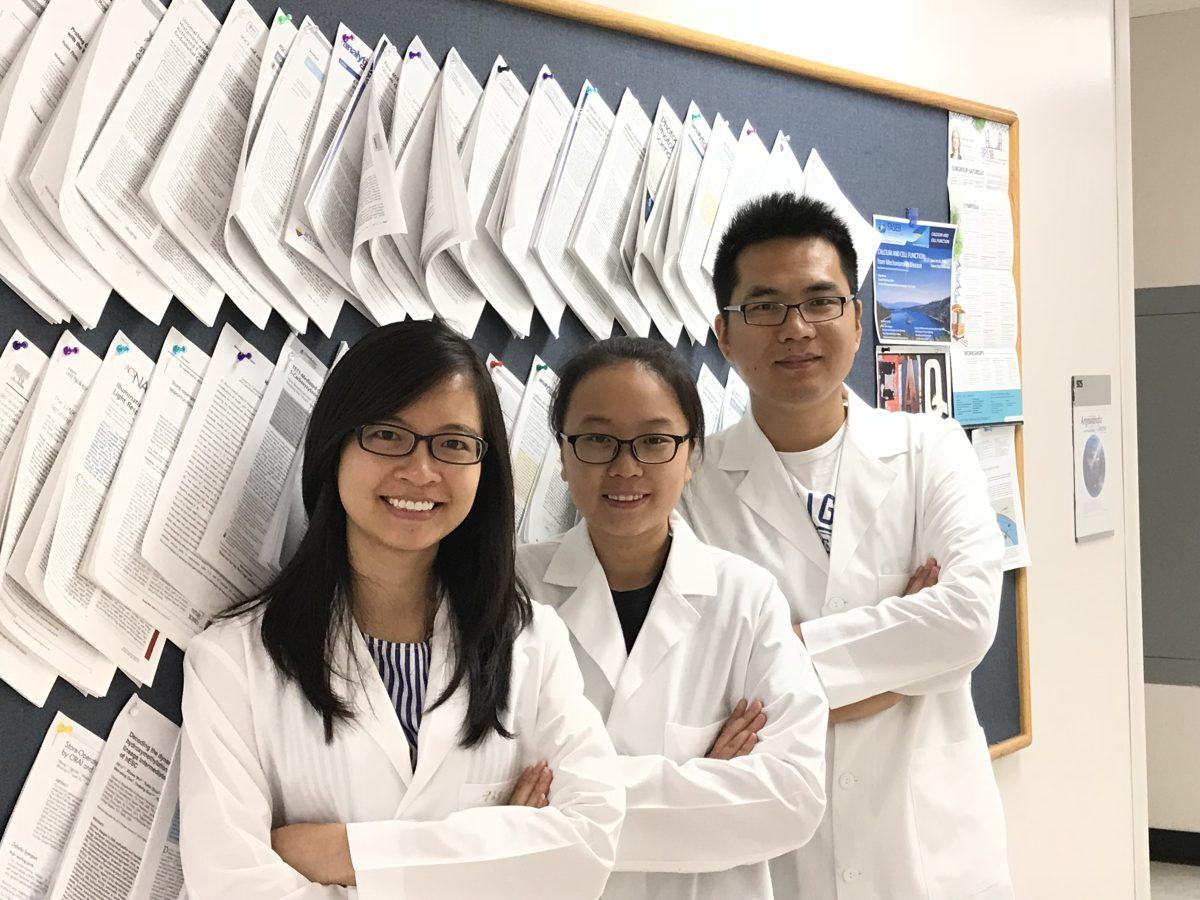The future of gene therapy is looking particularly bright.
The research lab of Yubin Zhou, associate professor at the Institute of Bioscience and Technology, is interested in developing tools to control gene expression by switching on a light. Guolin Ma, a postdoctoral researcher in the group, said the lab is exploring the field of optogenetics.
“Optogenetics belongs to gene therapy,” said Ma “You can turn on a gene function with light.”
Toward this mission, the lab has recently developed a system published in ACS Synthetic Biology which allows for light induced control of gene expression by taking advantage of calcium channels in the cell. Nhung Nguyen, third year graduate student in the Medical Science department, elaborated on the operation of their system.
“We tried to develop a tool, that is called CaRROT, so that we can control gene expression,” Nguyen said. “This tool is based on calcium signaling. When the light is turned on it induces calcium influx into the cells. When calcium enters the cell, our CaRROT, which has a calcium detector, will recognize the calcium and then transfer to the nucleus.”
Nguyen shared details on the design of CaRROT, which is a fusion protein composed of multiple proteins. It contains a calcium detector, which when activated allows it to transfer into the nucleus of the cell from the cytosol. Once in the nucleus, the piece responsible for gene regulation, dCas9, can get to work.
“The CRISPR-Cas9, dCas9, has specific target genes and then a transcription vector can turn on the genes,” Nguyen said.
In order for CaRROT to migrate to the nucleus, it must detect calcium influx into the cell and this is how light is involved. Lian He, who was recently awarded her doctorate, explained design considerations in the light induced calcium influx.
“For our CaRROT system there are two steps,” He said. “The first is light induced calcium influx and the second step is the calcium dependent gene expression. The most important thing is the time control of calcium because we need to make sure there’s no leaking of calcium. We optimized many constructs and found the best one with least leaking.”
The group investigated the regulation of two genes by their system, MYOD1 and ASCL1. Nguyen emphasized their importance in future applications.
“MYOD1 is for skeletal muscle differentiation and ASCL1 is for neural differentiation,” Nguyen said. “We want to turn on specific genes that will have function in regenerative medicines. Like we will turn on specific genes for cell differentiation – like from stem cell to heart cells or neural cells.”
The group is optimistic in applying their tool to cell differentiation, potentially allowing for light induced regenerative medicine.
Gene control with a flick of a switch
June 11, 2018
Photo by Courtesy
Researchers are optimistic about their gene research, which could result in light induced regenerative medicine.
Donate to The Battalion
Your donation will support the student journalists of Texas A&M University - College Station. Your contribution will allow us to purchase equipment and cover our annual website hosting costs.























